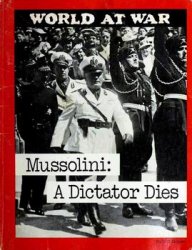Prussian success at creating a strong state depended on a line of soldier-kings, and for
a brief period Sweden under the Vasa dynasty – which also ruled Finland – followed
this pattern as well. Gustavus Adolphus, the most dynamic of these kings, came to the
throne as a teenager, when Sweden was fi ghting Denmark, Poland, and Russia. He was
largely victorious in these wars, gaining control of a number of Polish and Russian
ports and dominating trade in the Baltic. He created a more systematic bureaucracy,
opened primary and secondary schools supported by the government, and promoted
trade and shipping. After signifi cant victories by the emperor’s forces, Gustavus Adolphus
entered the Thirty Years War on the side of the Protestants, pressing all the way
into southern Germany with his troops, some of whom had been forcibly conscripted
in what was Europe’s fi rst nationwide draft. He died on the battlefi eld, but his very
able chancellor, Axel Oxenstierna (1583–1654), kept command of the army, and Sweden
gained a huge amount of territory, becoming the most powerful state in northern
Europe, despite the fact that the population of Sweden itself was tiny, only a million in
comparison with France’s twenty million.
Gustavus Adolphus paid for his wars by selling royal lands to wealthy nobles,
though this was a short-sighted solution, as it made the land tax-free. Nobles also
received salaries or pensions for serving as army offi cers, and after the king’s death,
they asserted their power and privileges. Swedish political history for the next two
hundred years saw a series of such noble bids for power, alternating with periods in
which kings tried to become absolutist on the French or Prussian model. What made
the Swedish case distinctive was the fact that peasants were also active players in this
struggle. In the later seventeenth century, Swedish kings forced the higher nobility to
give back about half the land they had bought, and then sold it to peasants and lesser
nobles, making it taxable. These groups then provided support for the monarch in
his moves to assert more centralized control, at least until King Charles XII (ruled
1697–1718) led an army against the Danes, Poles, and Russians in the Great Northern
War. Defeated as much by the Russian winter as by actual battles, as Napoleon and
Hitler later would be, Sweden lost all of its Baltic possessions. Charles escaped to
Istanbul, where he spent several years trying, unsuccessfully, to make an alliance with
the Ottomans. On fi nally returning to Sweden he was shot in the head, perhaps by
one of his own troops.
The assassination of Charles XII ushered in what Swedish historians call the “Age
of Freedom,” a fi fty-year period in which the Swedish national assembly, called the
Riksdag , ruled the country and the power of the elected monarchs war extremely
limited. The Riksdag was the only assembly in Europe that included a house with
peasant representatives, though the nobles, clergy, and townsmen who made up the
other three houses were suspicious of the peasants and often held secret meetings
that excluded them. This was a prosperous period economically for Sweden, and the
Riksdag encouraged science and manufacturing; in 1731 it chartered the Swedish East
India Company to expand trade with China and Southeast Asia. Disastrous losses in
still more wars, however, against fi rst Russia and then Prussia, provided an opportunity
for a reassertion of royal control. Gustav III (ruled 1771–92) restored absolutist
government in 1772 with a coup d’état , throwing the leaders of the Riksdag in prison.
Gustav also died by assassination, his successor was forced to abdicate after military
losses, and the Swedish nobility chose the next several kings, much as the English
gentry had engineered the choice of monarchs several times in the seventeenth century.
By this point Sweden had lost Finland and all of its other Baltic territories to
Russia, and was no longer a major power; the Swedish East India Company went
bankrupt in 1813.
Poland experienced similar struggles between the nobles and the kings for political
dominance, but here the noble class, called the szlachta (pronounced “shlahta”),
was completely successful. In the sixteenth century, the szlachta affi rmed its right
to elect the kings of Poland, and throughout much of the seventeenth century it
elected younger members of the Vasa family who had married into the existing Polish
dynasty and whose older brothers or cousins ruled Sweden. The seemingly endless
wars between Poland and Sweden were thus due in part to family jealousies and
confl icts. Warfare in the seventeenth century was generally disastrous for Poland,
which lost the Baltic areas to Sweden and Ukraine to the Cossacks, cavalry warriors
who lived in independent self-governing communities north of the Black Sea, many
of them former serfs who had fl ed Russia. The Cossacks – the word comes from the
Turkish word for robber or adventurer – used the opportunity to murder tens of
thousands of Jews, asserting that Jews were agents of Polish oppression. Under the
leadership of an able military leader elected king, John III Sobieski (ruled 1674–96),
Polish troops were key to the defeat of the Ottomans outside Vienna, but Sobieski
could not use these military successes to obtain more power for the monarchy or
to reform the way the Polish parliament ( Sejm) operated. The Sejm itself was paralyzed
by the practice of the liberum veto , which allowed a single member to defeat
any measure.
The eighteenth century saw a string of devastating wars on Polish soil, some involving
foreign combatants and others primarily civil wars, with foreign powers
intervening on the side of one faction or another. Between 1768 and 1772, Russian
armies won a series of victories against the Turks, which alarmed Austria, which
began making preparations to invade Russian-held territory. Fearing a resumption
of Europe-wide fi ghting just fi ve years after the treaty that ended the Seven Years
War, Frederick the Great of Prussia proposed that instead of gaining land from the
Ottoman Empire, Russia should be given part of Poland. This expansion of Russian
holdings would be balanced by similar expansions in Prussia and Austria, as they also
would take parts of Poland. The deal was agreeable to all three powers, and Poland
lost half its population in this partition, with the Polish king and parliament unable
to do anything about it. Political reforms and national revolutions were also unable
to stop two further partitions in 1793 and 1795, and Poland disappeared from the map
of Europe.




 World History
World History









